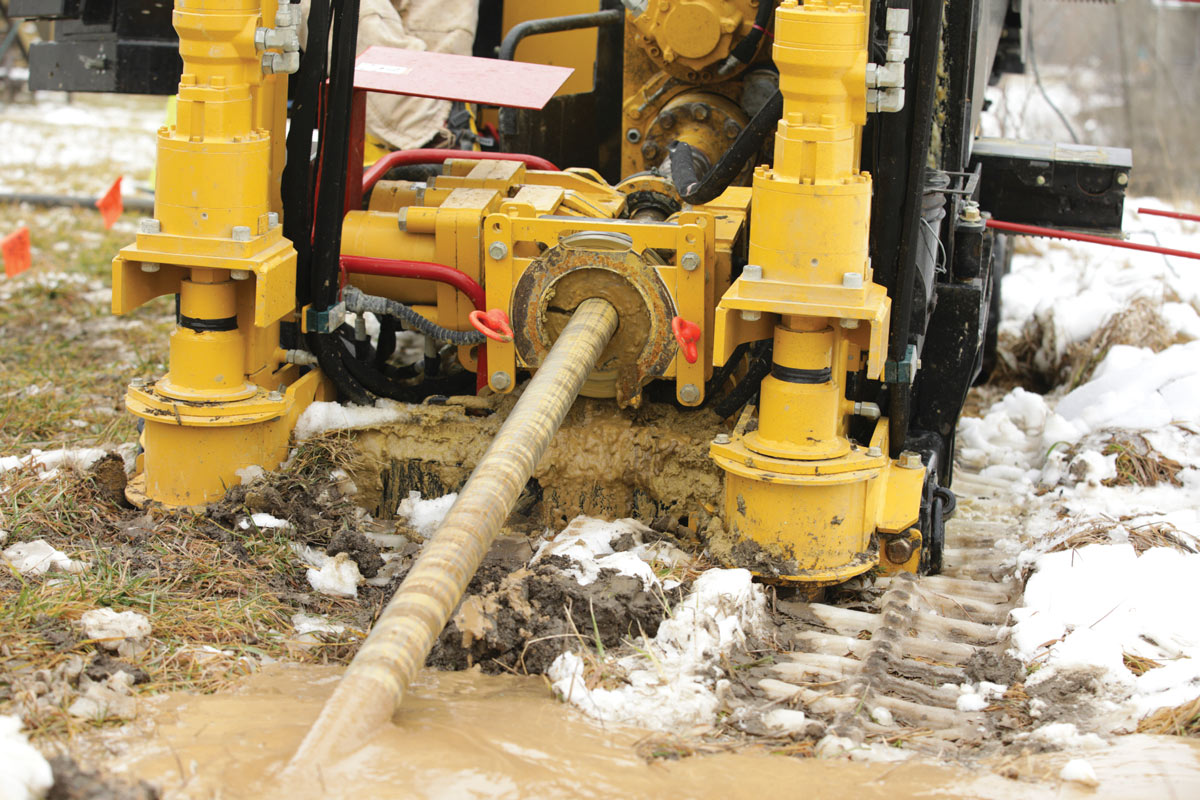
Increasing Jobsite Profitability Requires Versatile HDD Tooling
So you might be asking yourself, what exactly is versatile tooling? Simply put, versatile tooling gives you the ability to control your own tooling maintenance rather than being dependent on the manufacturer. This versatility is accomplished via a cutter that is fastened in place instead of being welded (traditional). Fastening offers the benefit of replacing cutters showing wear and switching to a different style cutter at any time, even on the jobsite.
While initially facing an uphill battle with contractors lacking confidence in tools that are not welded, versatile tooling has proven it can hold its own. It has been shown to be effective in some of the toughest rock environments. As a result, in the last five-plus years, versatile tooling — especially with hole sizes 30 in. and below — has gained more traction as drillers recognize the upside over traditional welded in cutters.
Bottom line: Versatile tooling means less equipment to own and haul to the jobsite, as well as reduced down time. As the market grows, there are multiple designs that are available today. Some companies that offer versatile tooling include Horizontal Technology, INROCK and Century Products Inc.

Strategy-Versatile vs. Traditional
Now that you have a better idea of what versatile tooling is, let’s discuss how it might affect strategy in preparation for and completing a hole. Using a traditional hole opener, a contractor requires multiple identical reamers (one or two) and one backup unit to feel ready for a job. These assemblies would have cutters that are welded in place and selected in advance, as it takes time to both manufacture and build the tooling.
RELATED: HDD Maxi Market Slowed by Flat Oil & Gas: Is There Anything Positive Ahead?
With versatile tooling one would need two base units (into which arms are fastened) and might have multiple sets of cutter assemblies. In addition, one could have alternate cutters on site that could be used if unexpected formation changes occur. A few examples of the types of cutters available are TCI (Conical/Chisel), Milled Tooth and PDC.
One of the main benefits to note is the time you will be able to save. Versatile means having two base units rather than between two and three traditional reamers. Also, with versatile you have the flexibility to swap cutters on the job or in preparation for a different job in the future. Compare this to the traditional maintenance path which includes shipping, scheduling the manufacturer, and ensuring parts availability. The result is days of lead (down) time with welded as compared to just hours of lead (down) time with versatile.

The Unexpected-Versatile vs. Traditional
On the jobsite, avoiding down time is critical to both hitting deadlines and budgets. Unexpected formation changes are a frequent challenge. In this situation, the contractor needs a response via modifying equipment or has to scramble to purchase something off the shelf.
Let’s break down those response paths and the prospective lead time involved:
1. Traditional Modification/Maintenance Path (five to nine days lead time)
- Break off tooling from rig
- Implement back-up tooling
- Shipping to manufacturer (one to three days)
At the Manufacturer
- Air arcing – removal of cutters (one day)
- Welding – installation of new cutters (one day)
- Return shipping (one to three days)
2. Versatile Modification/Maintenance Path (e.g. Century Products Falcon FR ~four hours)
On Rig Maintenance
- Remove existing cutter assemblies (one hour)
- Clean pocket interfaces and reapply protective grease (one hour)
- Install new bolted cutter assemblies while unit stays on rig (two hours)
3. New Traditional Equipment (two to four days)
- Locating and purchasing the equipment in stock (one day)
- Shipping (one to three days)
Bottom line: The ability to respond with versatile tooling in these examples saves you an average of one and a half to nine days of downtime. This would also yield savings on shipping costs and manufacturer labor. Ultimately, versatile tooling stacks the deck to keep you on time and on budget. It puts you in charge of your own maintenance plan and gives you the comfort of being prepared for anything that may come your way.
RELATED: Keeping Your Pipe Straight – Swivels Play an Important Role in Every HDD Project
Long Term Assets-Versatile vs. Traditional
By switching to versatile tooling, the number of tools and area needed to store them can be decreased significantly. It is not unusual to see a large area covered with traditional tooling at a contractors’ facility; however, that’s not the case with versatile tooling.
Along the same lines, less investment and maintenance are required with on-hand tooling. By stocking several base units combined with multiple sets of various styles of cutters, you can be prepared to tackle any job. With traditional, the contractor would require multiple reamers containing each style of cutter. While traditional tooling does have a path to flexibility, the lead time and costs involved are far greater.

HDD Profitability-Versatile vs. Traditional
Once you do the math, you can begin to see the potential for increased profitability when you switch to versatile tooling from traditional. Contractors could consider the following:
- Reduced investment in equipment
- Less equipment to transport
- Ability to adapt your tooling to the unexpected
- Reduction in downtime
- Lower maintenance costs
Summary
While traditional welded tooling continues to be commonplace in the market, versatile tooling is proving to be a viable alternative in sizes 30 in. and below. As its popularity grows, contractors will overcome the stigma of welded as the industry standard and embrace this type of tooling. Once contractors experience the benefits and flexibility of this type of tooling, it will become another tool in their arsenal.
Andy Houdek is a mechanical design engineer at Century Products. Jeff Beste is the manager of HDD Services at Century Products.




